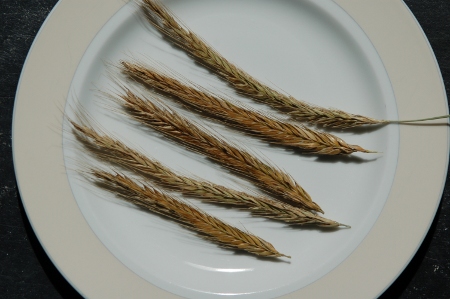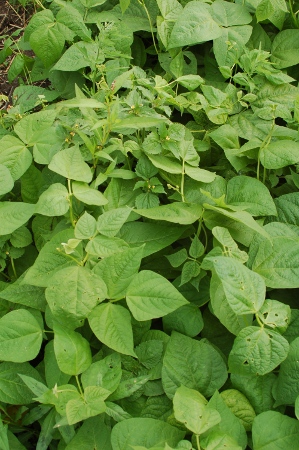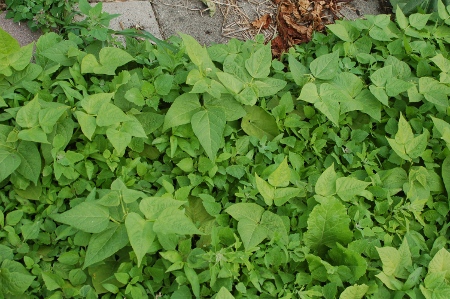Here are some of the seed heads I gathered from the perennial rye plants on a standard sized dinner plate.
These are among the best I found on the plants. Most plants had empty seed heads, or heads containing only a few or only immature seeds. The ones in the picture are mostly full. The main reason for this is the plants are recent crosses made by Tim Peters, and still need to be selected.
Out of about 400 plants, in about 38m2 or 400ft2, I got about 1 kg of seed heads. After cleaning, the amount of grain and/or seeds would be a little less than this. I estimate with selected plants it would be possible to get yields about 10 times higher. What this means is on a fairly small sized suburban plot it should be possible to get enough grain each year for several loaves of bread.
Harvest time was less than an hour, and care for the the plants while growing was really minimal. It really was almost ‘free’ grain.
Out of the 400 plants I identified and marked about 20 I thought were particularly good, and one in particular that was exceptional compared to the others. What I plan to do is dig these plants up, and divide the crowns for replanting. My understanding is each crown contains about 100 separate genetically identical plants that can be used for replanting, and I’ll make rows with each of the crowns to facilitate cross pollination.
I understand it’s possible to bag seed heads together in order to make controlled crosses between two plants, so the one plant I identified as particularly good I’ll try to plant in such a way as to facilitate controlled crosses with the others. I’ll also plant more of this one in order to promote it’s presence in the overall genepool.
By the way, Nick Routledge recently sent me an email telling me about something he wrote about Tim Peters perennial grains projects. You can find it here.
I have small amounts of seeds to share with people interested in participating in a breeding project. You need to have a climate that’s not too different from mine, because it’s what the seeds are now becoming acclimated to. I live in northern Europe, which is similar to the North American pacific northwest. Preference is for people in Europe, because there’s no need to worry about customs regulations. If you live some place else and are interested let me know. I’ll try to find someone else who might have seeds to share with you.
The main issue is I don’t have that many seeds to share, and I want to send them to people who have the best chance of success with them. In a few years this may be less of an issue, because there might be more people growing the plants who are willing to share seeds.
In particular, these plants are not suitable for very hot and dry climates. Mike tried them in South Africa, and they were killed by the heat. Tim Peters also confirmed they were not bred with hot dry climates in mind, but this may be a future breeding effort on his part.











